Are you brave enough to explore an itinerary of castles (with and without ghosts), lochs, magicians, and mysterious creatures ?
If so, put on the soundtrack of “Braveheart“…as background music… as the first notes resonate, think of Mel Gibson wearing a kilt, of a land of mists and heather-covered moors, of lochs, cliffs, and waterfalls, a land of the sound of bagpipes. Then you are ready to explore the Highlands, the inspiration for many filmmakers and writers!
For many, Edinburgh, the Scottish capital since the 15th century and located on the Southern shore of the Firth of Forth, is the gateway to Scotland and the Highlands. The old and new town is listed as a UNESCO World Heritage site. The city that inspired “Strange Case of Dr. Jekyll and Mr. Hyde,” a novel by Robert Louis Stevenson and first published in 1886, has two nicknames at once contradictory and complementary (just like Jekyll & Hyde). Edinburgh gained the name “The Athens of the North” not only because of its similarity to the Athens’ landscape, but also because of the 18th-century Scottish Enlightenment — the world of the economist Adam Smith, Sir Walter Scott, Robert Louis Stevenson among others, a city of culture, art, and literature, philosophy and science. Edinburgh was also nicknamed “Auld Reekie,” Old Smoky, for the smoke covering the town, and also for its noisy and crowded pubs, long evenings, beer drinkers, poets, comics, and colorful slang.
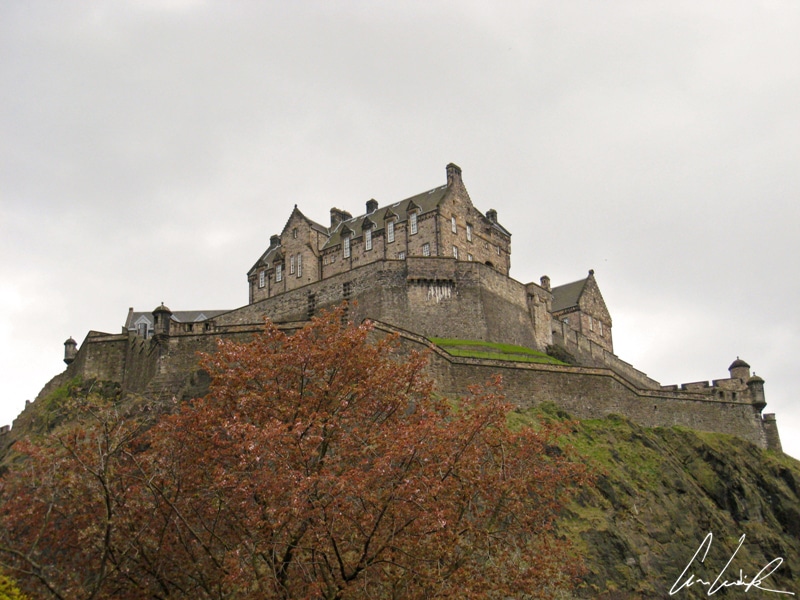
Edinburgh Castle
The castle, something between a citadel and the Acropolis, sits high upon a rocky outcropping, and its silhouette dominates the skyline from every part of town. Indeed, it looks a little sad perched all alone on its rock and hovering over us as we, looking for the Beckett or our TV series, walk the labyrinth of buildings, passages, stairs, and arches that make up the old town. Andrew Marlowe, writer and producer of the series, ABC’s Castle, promised us that there would be a fifth season (will the screenwriters once again sell us this TV dream?)…. Our quest was unfulfilled (for those unfamiliar with the series on ABC, a search on the internet is needed).
We leave Edinburgh, heavy-hearted like the sky for not being able to find “Caskett” to storm the medieval Old Town of Stirling built, to be sure, around a beautiful castle! Stirling Castle sits atop Castle Hill. It is one of the largest and most important castles in Scotland, a fortress surrounded on three sides by cliffs that rise from the mists of time. Some buildings date from the fourteenth century. This is where the “Flyte Club” performes (long before the birth of Brad Pitt). “Flyting” is an old Scottish term meaning “quarrel” and refers to a contest between Scottish poets between the fifth and the seventeenth centuries consisting of an exchange of insults in verse by poets. In the fifteenth century “flyting” became a public entertainment and was held in public arenas. The winner was selected by the crowd. It is a bit the ancestor of some reality TV shows. Have we had a show taking place in a castle with participants insulting each other all day long?

The Highlands – Multicolored clouds
Let’s leave behind this world of lords, and move towards the Highlands, the part of Scotland northwest of the Highland Boundary Fault. It is a sparsely populated region with less than ten inhabitants per square kilometer, but with the highest concentration of large and small sheep anywhere…! Besides, do you not think it looks like the Rorschach in “Watchmen“? But how can we be sure that we are in the Highlands: where a mist harmoniously covers moor and hills; where castles on a loch are inhabited by invisible guests such as the thirteenth century Eilean Donan Castle in the western highlands; where we hear strange throbbing music played by men in skirts; and where multicolored clouds in tones of white, gray pigeon, blue spin faster than anywhere else? Elementary my dear Arthur (Conan Doyle), a famous Scottish writer, for we find strange cows with long hair and flying fringe (Highland cows) along with countless deer.
With so few inhabitants per square kilometer, some survival tips are necessary, for example, how to predict the constantly changing weather? Of course, use the “Forecasting Stone“. Grab a big stone and if…
Forecast: Condition
- Stone is wet: Raining
- Stone is dry: Not raining
- Shadow on ground: Sunny
- White on top: Snowing
- Can’t see the stone: Foggy
- Swinging stone: Windy
- Stone gone: Tornado
In this beautiful month of May, the temperature is rather cool, which means that polar and Gore-Tex jackets are welcome. But ultimately, these weather conditions prevent us from getting eaten by midges, voracious little things, which move in tight formation before wildly assaulting their prey! If you want to warm up, go to a pub. What a joy to see all these beer drinkers with their lips glue to the bottleneck and even when tempers flare, they never throw away the first beer. Ah, ah, you could almost argue that a man in a tavern is not so primitive after all!

Skye Island – Old Man of Storr
Further to the Northwest, the region is divided into a set of small archipelagos: Hebrides, Skye, Orkney, and Shetland, to name a few. We have selected the Isle of Skye, the second largest Island in Scotland, just off the west coast. Skye takes its name from an Old Norse word meaning “cloud Island” and will take your breath away with its stunning scenery and dramatic landscapes comprising some of the wonders of Scotland. If you have seen the movie “Prometheus” or, at least, the preview, you will easily recognize the Old Man of Storr, a 50-meter pillar of rock dominating the landscape in the northeast of Sky and surrounded by a rocky chaos. A very peculiar and original geological formation… we understand that it may have inspired Ridley Scott! Further north lies another wonder, Kilt Rock, spectacular cliffs over 100 meters high that boast the magnificent Mealt waterfall, which falls off the cliff into the sea 180 feet below. Kilt Rock cliffs are composed mainly of Basalt and Gabbro look similar to a pleated kilt.

Skye Island, Bay
he picturesque road alongside the island allows us to admire bays lined with villages of white houses and impressive cliffs. On our left emerges another magical place, the Quiraing, the largest landslip in Scotland located on the east coast of Trotternish. This mountain range covered with bogs and meadows offers impressive panoramas. It has served as the backdrop for the science fiction movie “Stardust of the Star.” Skye has been the set for many a movie ! The Quiraing is also a world famous hiking area. The road going through it reaches a plateau from where the view across the marshlands is just incredible. On this narrow and winding road along the West Coast, the landscape is peppered with many sheep, oblivious to the beauty of the place, and the famous Highlands cow, all shaggy, hairy appearance. The last step of our evening, Neist Point is known for its spectacular cliffs and especially for its lighthouse. A particularly remote area reached by an endless road, it is another must-see. Built in 1907 by Charles and David Stevenson, Neist Point lighthouse is located on the northwest side of the Isle of Skye near Glendale. Neist Point is the most westerly point of the island. It was featured in the movie “Breaking the Waves” (yes, another movie!!)
After visiting the island, it is time to savor the traditional Haggis, a pudding made of sheep’s pluck encased in the animal’s stomach. Despite what Jacques Bodoin in his sketch said, it’s not so bad… “Jacques Bodoin about the haggis“…
Discover my others articles about Scotland
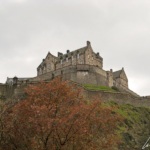
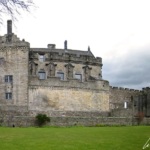


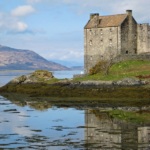
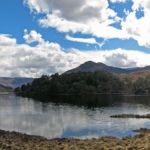
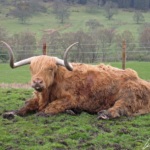
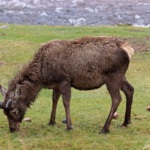
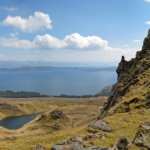


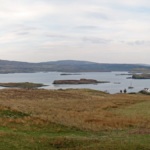
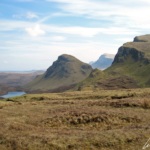
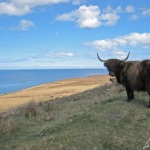
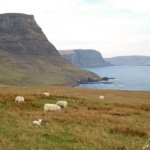


Your images of the highlands are gorgeous. I have been to Edinburgh and loved the city. Did not get a chance to visit the highlands though. Your sophisticated weather detection technique had me in splits 😉
Ah, ah the weather plays such an important role within Scotland’s dramatic landscapes, and it would be much different without the famous Scottish weather ! People use to say that you can experience four seasons in one day, but don’t let this put you off, even if the weather is not necessarily good you can guarantee it will be interesting and breathtaking 😉
Scotland has been on my bucket list for years. Seeing this posts reminds me of why. I didn’t realize Prometheus was filmed there, great movie!
There are countless spots in Scotland that were used for filming ! Even in the cold and the rain, there was just something magical about the Highlands. Maybe the fairies really DO hold sway here…
Beautiful landscape and the best – and certainly most accurate – way to predict the weather. LOL! We tried tracking the weather during our last trip in Greece and I swear yours is a much more accurate method! LOL!
Scotland is one of the most naturally beautiful countries in the world: powerful peaks, untouched beaches, glorious food and drink ! I like to think it has something for just about everyone.The changeable Scottish weather is probably one of the largest factors to deter you from visiting the Scottish Highlands… But now you know the accurate way to predict the weather 🙂
This is the perfect article! Im busy planning a “Fantasy-related” trip for my geeky husband who’s into all those movies. He loves castles!
There are countless spots in Scotland that were used for filming ! For example, Doune Castle, located a short drive from the city of Stirling has something of a ‘Hollywood’ castle. It has appeared in Monty Python and, briefly, as Winterfell’s interior in Game of Thrones 😉
LMAO the stone weather system is never wrong though! Gorgeous photos, makes me want to go now!
The weather is just so unpredictable, some say you can experience four seasons in one day, but don’t let this put you off, even if the weather is not necessarily good you can guarantee it will be dramatic, interesting, breathtaking and defiantly very photogenic.
Your photos of the Highlands are so gorgeous, and I’m absolutely sold on a visit. I want to see the Castle and wander the Old Town of Stirling! And I can see Andy wanting to explore Kilt Rock, too!
Thanks 😉 Whether you’re a foodie, an outdoor enthusiast, a history buff, or a hopeless romantic, the one place you should be adding to your travel bucket list this 2017 is the Scottish Highlands.
Such beautiful locations! Your photos are just mindblowing and breathtaking! Absolutely gorgeous!! I can’t wait to see where you take us next!
Thank you 🙂 Scotland is the perfect place for a road trip. The scenic Braveheart country has thousands of lochs, misty hills and mountains, a famous sea monster and enough clan stories to keep you entertained for weeks.
This is such a great post! I would love to visit Scotland!
Scotland should definitely be on your bucket list. If it’s not, it soon will be… 😉
I just came back from the Scottish Highlands last month and had the same feelings. The place was absolutely gorgeous and special! And yes I agree that haggis tastes better than it sounds 🙂
A tour of the Highlands means pure adventure ! Adventures of the culinary kind: cullen skink, Highland salmon, venison burgers, haggis… The highlands were an amazing experience, a delightful glimpse of the Scottish spirit, and one of my most favorite memories of Scotland.
Your photos are absolutely stunning! I love finding cute local animals when I travel. The shaggy looking highland cow is adorable! Would love to visit here one day.
Thank you 🙂 With it’s unbelievably lakes and breathtaking natural allures, Scotland should definitely be on your bucket list. If it’s not, it soon will be…
I would love to visit the Highlands. The pictures are stunning .Cool in May is making me wish I could visit .A good read!
Scotland offers everything for all seasons, and the scenery changes with each season giving you a different aspect each time you visit… But May is a often nice month to visit Scotland. Weather-wise it can be cool, but the warmth is on its way. Regarding the midges, we didn’t have any… So lucky !
I have never been to Scotland. I used to live in London for a year and I always wanted to visit it but I never could. Seeing this photos I feel such a regret for skipping that trip.
Purple heather-covered hills and mountains cloaked in mist. Legends and songs that seem to have sprung from the very earth. The Highlands of Scotland with its glens, bens, lochs and moors are really beautiful ! Scotland should definitely be on your bucket list. If it’s not, it soon will be…
haha LOVE the weather forecast method! I missed the highlands when I was in Scotland last, but I definitely need to go back to do more extensive exploration. Sounds like May was the perfect time to go – cool, but not super buggy (which I might assume would be a big problem in warmer months with all the water).
A tour of Scotland means pure adventure ! My feelings still resonate when I speak of the natural, unpopulated beauty of the Highlands ! Ah, ah, the changeable Scottish weather is probably one of the largest factors to deter you from visiting the Scottish Highlands, it’s not a case of the weather is always bad, it is just so unpredictable. Some say you can experience four seasons in one day 😉 May and September can be a very nice time to visit with often nicer if not better than the main summer months. This time of year you are less… Read more »
Those are beautiful photos! We haven’t been to Scotland, but when we were in Ireland we got such a kick out of seeing sheep everywhere. Totally unexpected for us American city-dwellers!
Thank you 🙂 There were sheep everywhere just freely roaming along the path. We saw several sweet little baby lambs !
I have been to this amazing Scotland Highlands. I had the best time of my life. You feel the best of the nature. I saw a man sitting alone next to the water fall and reading book! There was that only man in like 5miles area.
Great experience!
Thanks for sharing! Cheers!
Scotland is amazing and perfect for a road trip: surreal landscapes like the Isle of Skye, cool cities like Edinburgh, crazy traditions and a nice pub on every other corner… The Highlands have remained unspoiled, maintaining their wealth of natural beauty and it is obvious that there really is no one else around 😉